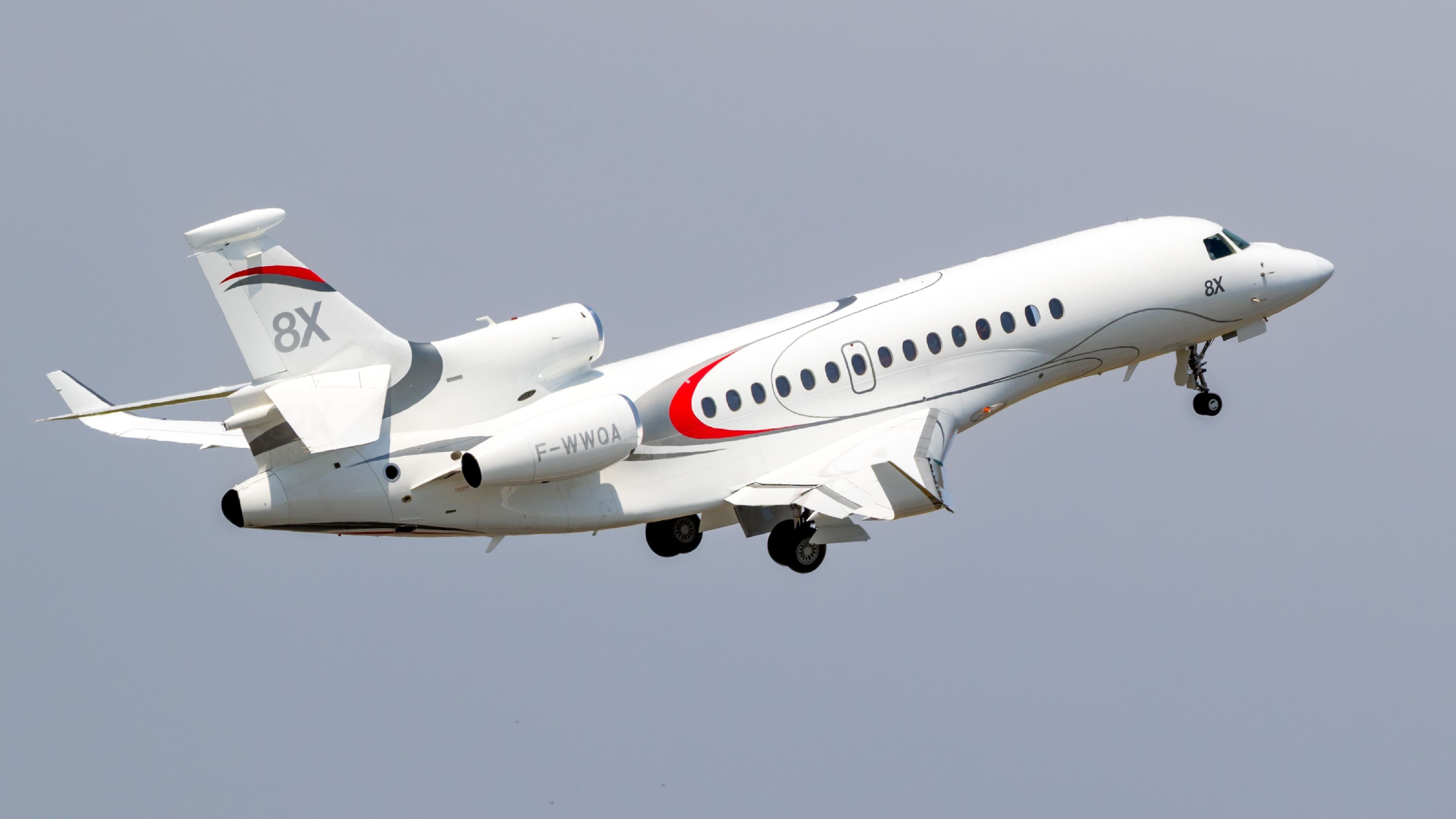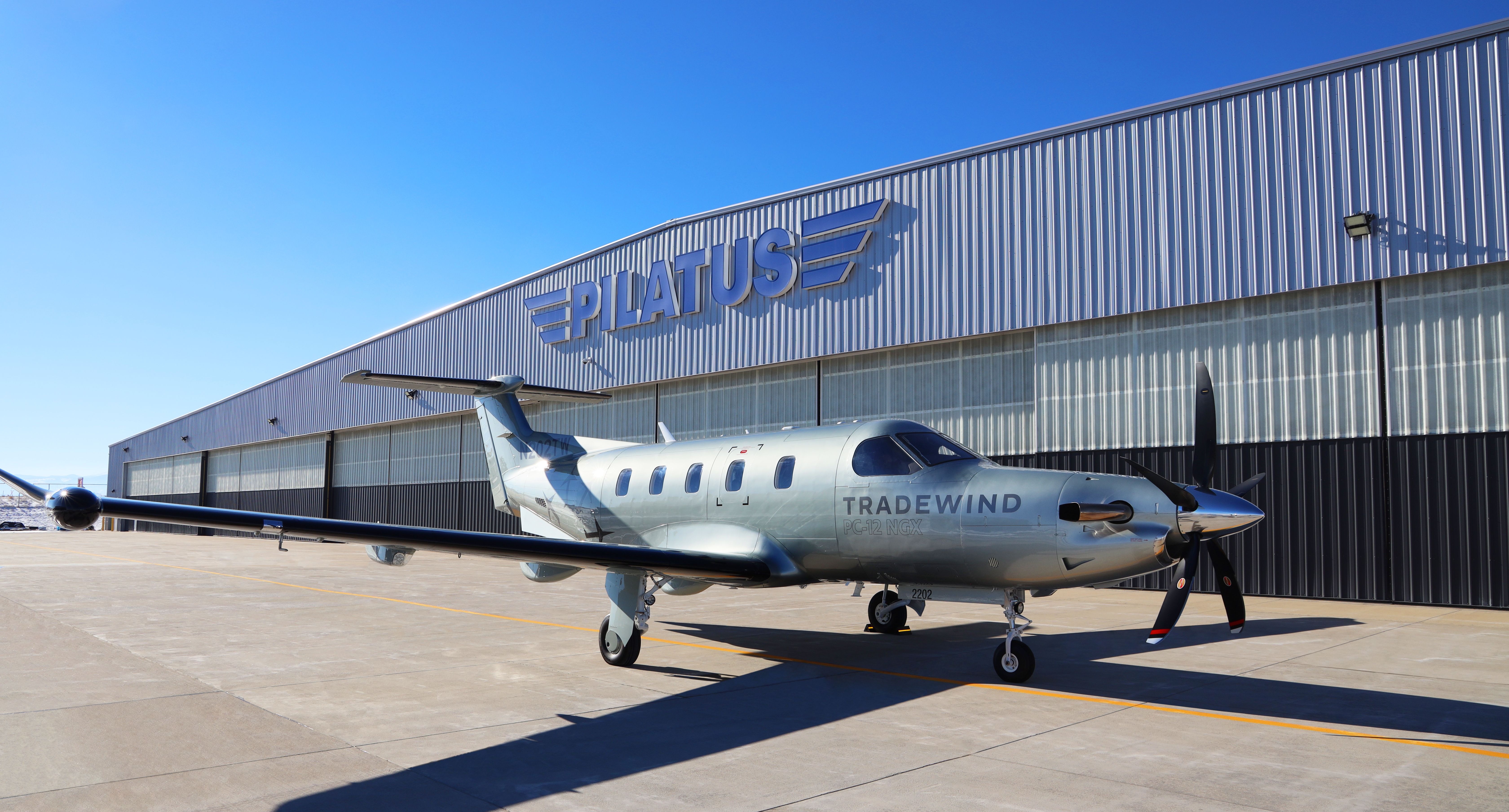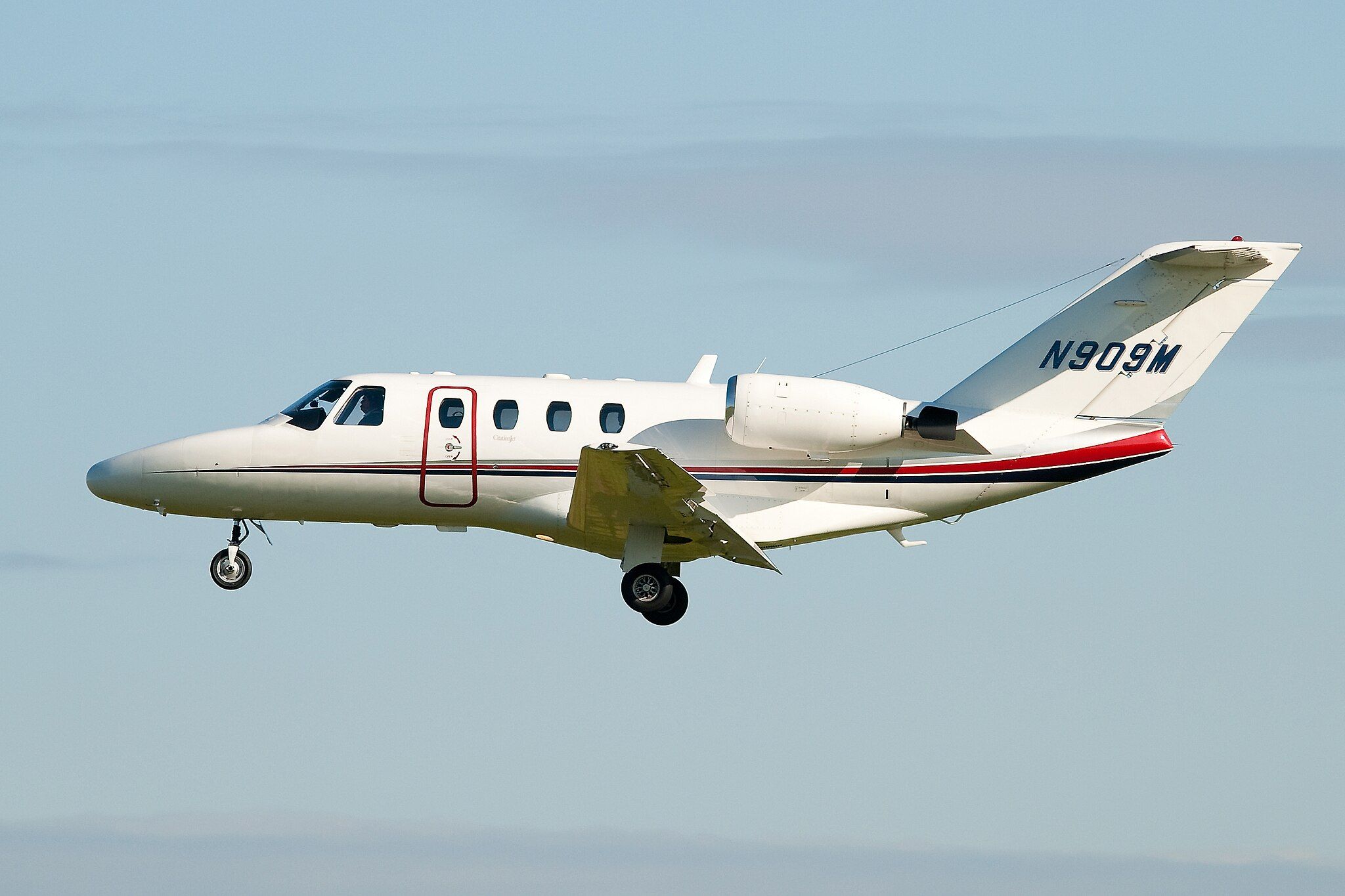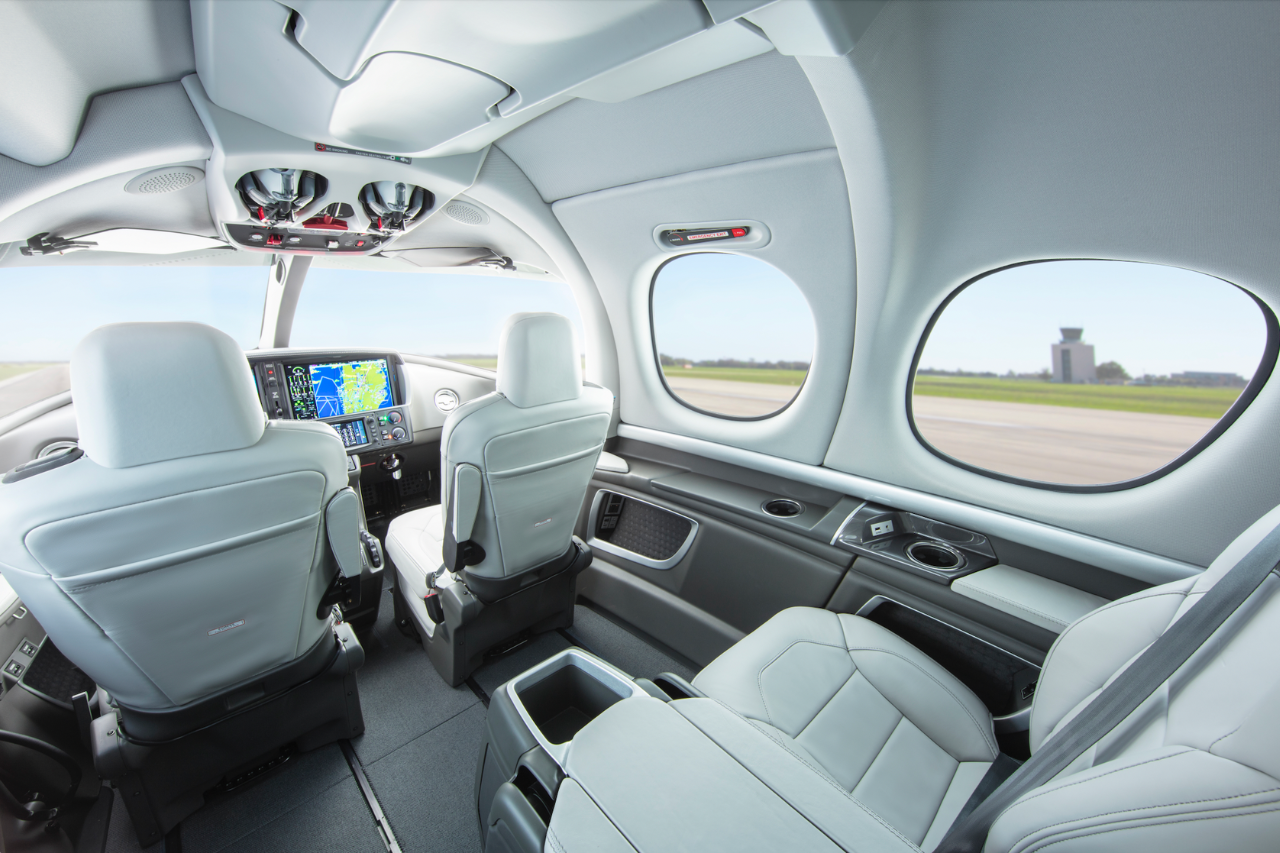Private aviation has come under tremendous scrutiny regarding its high carbon footprint. A private aircraft’s greenhouse gas (GHG) emissions are much higher than those of commercial jets due to smaller occupancy rates.
Modern private jets and engines have advanced design and performance, reducing environmental GHG emissions. Simple Flying has compiled a list of private aircraft with some of the lowest CO2 emissions in the market, as highlighted by Conklin & De Decker.
5 Dassault Falcon 8X
CO2 emissions: 3.62 Metric tonnes per hour
| Passenger capacity | 12-16 |
| Range (8 passengers) | 6,450 NM (11,945 km) |
The Dassault Falcon 8X is a long-range aircraft derived from the 7X with increased range, engine optimization, and superior aerodynamic performance. The aircraft has a seating capacity of 12 – 16 passengers. The aircraft features one of the quietest cabins in its class. It is one of few aircraft in production featuring three engines.
Photo: VanderWolf Images | Shutterstock
Dassault claims that the Falcon 8X is significantly more fuel-efficient than the competition. According to the manufacturer,
“The 8X is up to 15% more fuel-efficient than any other aircraft in the ultra long-range segment. Much of the credit goes to the three highly efficient Pratt & Whitney PW307D engines, which power the Falcon 8X. Each engine provides thrust at 6,722 lb / 29.90 kN while reducing emissions to levels well below the latest standards.”
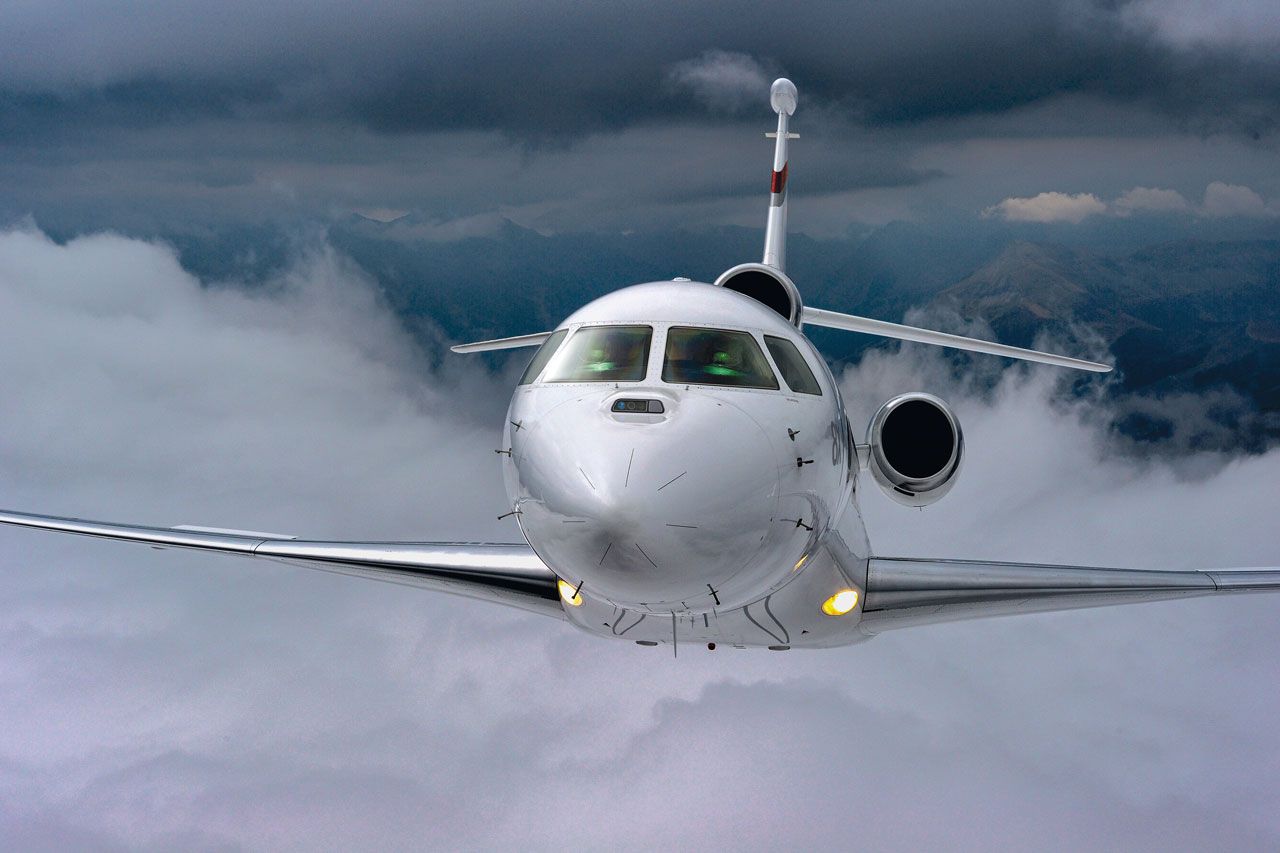
Dassault’s Falcon 8X Can Now Be Equipped With 2 Heads Up Displays
This technology increases the aircraft’s low visibility operations capabilities.
The Falcon 8X’s fuel efficiency, quiet cabin, and modern engines make the type particularly eco-friendly.
4 Embraer Phenom 300E
CO2 emissions: 1.76 Metric tonnes per hour
| Passenger capacity | 6-8 |
| Range (8 passengers) | 2.010 NM (3,723 km) |
Embraer’s Phenom 300E has been the company’s best-selling light jet for over a decade. It also happens to be the world’s fastest and longest-ranged single-pilot jet. The aircraft has a seating capacity of 6 – 8 passengers. The Brazilian aircraft manufacturer took the type to the skies for the first time in 2008 before entering it into service the following year. As of 2023, Embraer has produced more than 700 examples of the type.
Photo: Austin Deppe | Shutterstock
While two Pratt & Whitney Canada PW535E engines produce most of the Phenom 300’s emissions, the jet’s environmental aspect keeps it popular among owners and charter operators. According to the manufacturer,
“Embraer invests in sustainable technologies and contributes to the long-term development of its surrounding communities. As a result, the Phenom 300E is equipped with remarkably powerful yet efficient engines, which offer a reduced noise footprint as well as better fuel burn and fewer emissions.”
3 Pilatus PC-12
CO2 emissions: 1.61 Metric tonnes per hour.
| Passenger capacity | 6-9 |
| Range (8 passengers) | 1,845 NM (3,417 km) |
The Pilatus PC-12 is a single-engined turboprop aircraft designed and manufactured by Pilatus Aircraft of Switzerland. This aircraft has a seating capacity of 6 – 9 passengers. Its single Pratt & Whitney PT6A engine provides the safety and reliability of a twin-engine aircraft. The versatility of the type and its capability to operate from unpaved airstrips have made the Pilatus PC-12 a famous aircraft among a wide range of customers.
Photo: Pilatus Aircraft
Pilatus’ famous aircraft is equally outstanding in its “responsibility” towards the environment. The manufacturer describes it as “the lean machine.” Pilatus Aircraft claims the PC-12 has up to 74% fewer emissions than competitors. It is also fully approved for Sustainable Aviation Fuel (SAF). As of 2023, Pilatus Aircraft has delivered over 2000 examples of the PC-12 aircraft.
2 Cessna CitationJet CJ1+
CO2 emissions: 1.35 Metric tonnes per hour.
| Passenger capacity | 7 |
| Range (8 passengers) | 1,550 NM (2,871 km) |
The Cessna Citation CJ1 is a light jet capable of carrying up to seven passengers. Developed in the 1980s, the CJ1 is powered by two Williams FJ44 turbofan engines, enabling ultimate fuel efficiency and reliable aircraft performance. The newer, CJ1+, is an enhanced version with valuable upgrades to the engine, allowing greater payload and efficient performance.
“The CJ1+ is an extremely fuel-efficient private jet, burning an average of 132 gallons per hour, fuel consumption slightly lower than the CJ1, even though the CJ1+ has a slightly higher payload than the original CJ1.”
This lower fuel burn translates to the aircraft’s eco-friendly performance. Moreover, the noise output of the newer engines is superior. The aircraft has a CO2 emission rate of 1.35 metric tonnes per hour.
1 Cirrus Vision SF50
CO2 emissions: 0.78 Metric tonnes per hour.
| Passenger capacity | 6 |
| Range | 600 NM (1,100 km) |
The Cirrus Vision SF50, also known as the Vision Jet, is a very light jet designed and produced by US-based Cirrus Aircraft. The aircraft features a seating capacity of six passengers. The Vision Jet is remarkable for many impressive features, one of which is its low specific fuel consumption (SFC) and superior aerodynamic performance.
Photo: Cirrus Aircraft
According to Cirrus Aircraft,
“The Vision Jet adds flexibility for short regional and longer cross-country missions with lower fuel burn due to its innovative single-engine and V-tail design. All Vision Jets can be powered by SAF fuel as well.”
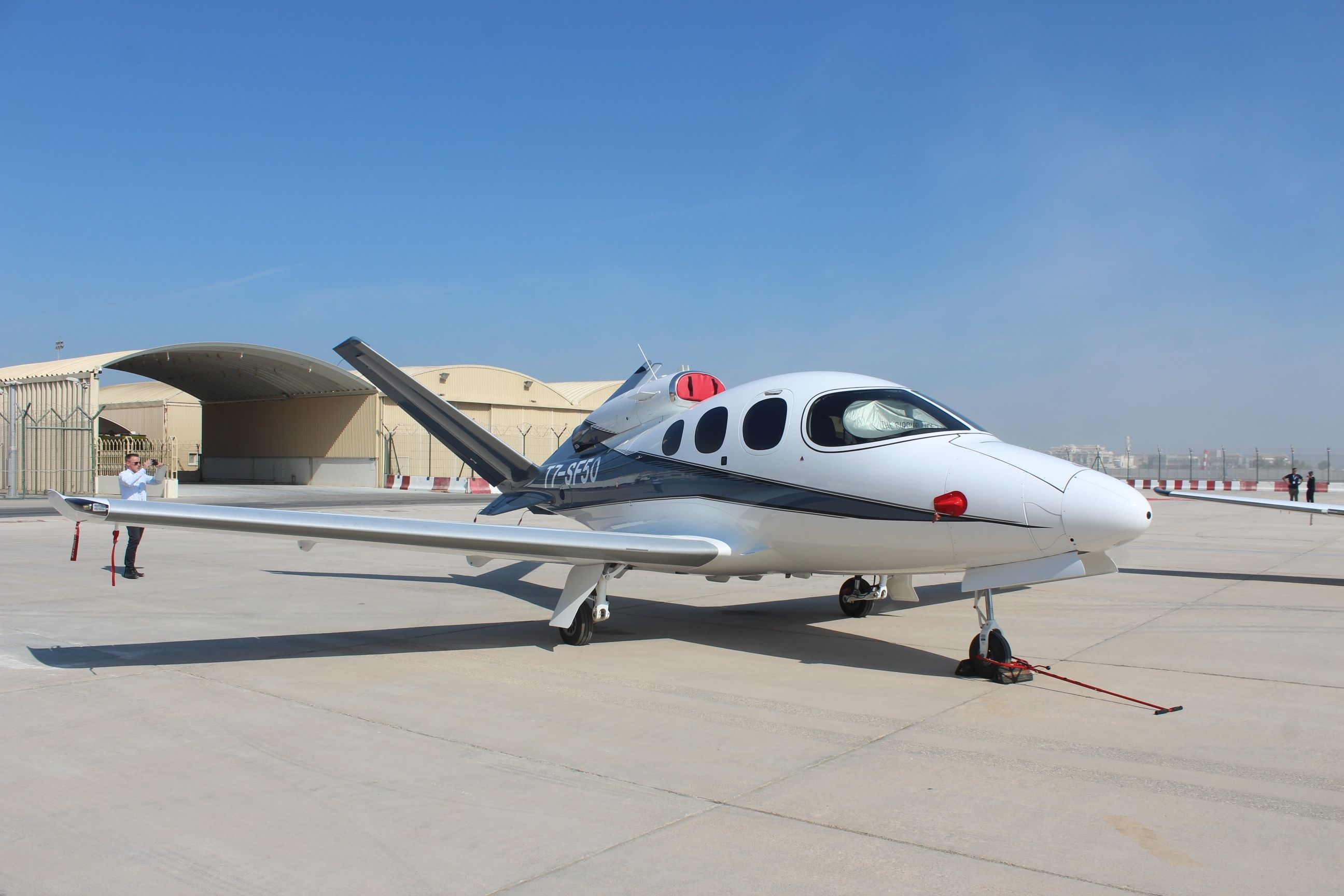
5 Incredible Features Of The Cirrus Vision Jet
This small airplane is packed with some truly astounding innovations.
With CO2 emissions of only 0.78 Metric tonnes per hour, the Vision Jet has, according to Conklin & De Decker, the lowest emission rate compared to all business and general aviation jets.
What are your thoughts on the top eco-friendly private aircraft in the world? Share your views in the comments section.


